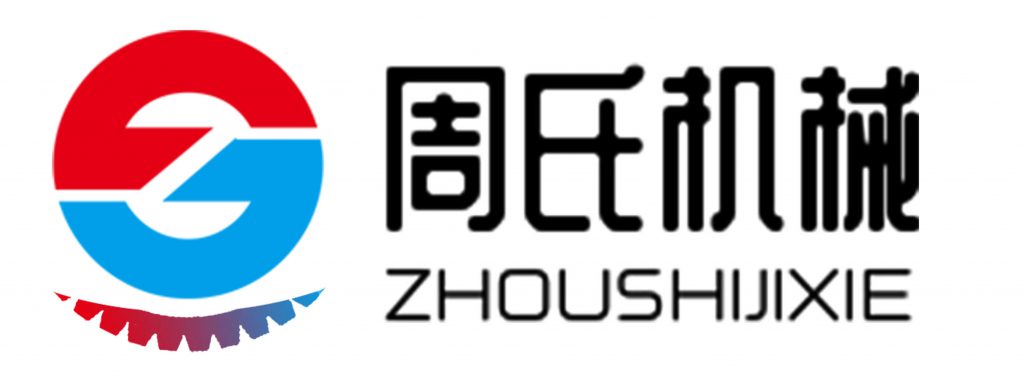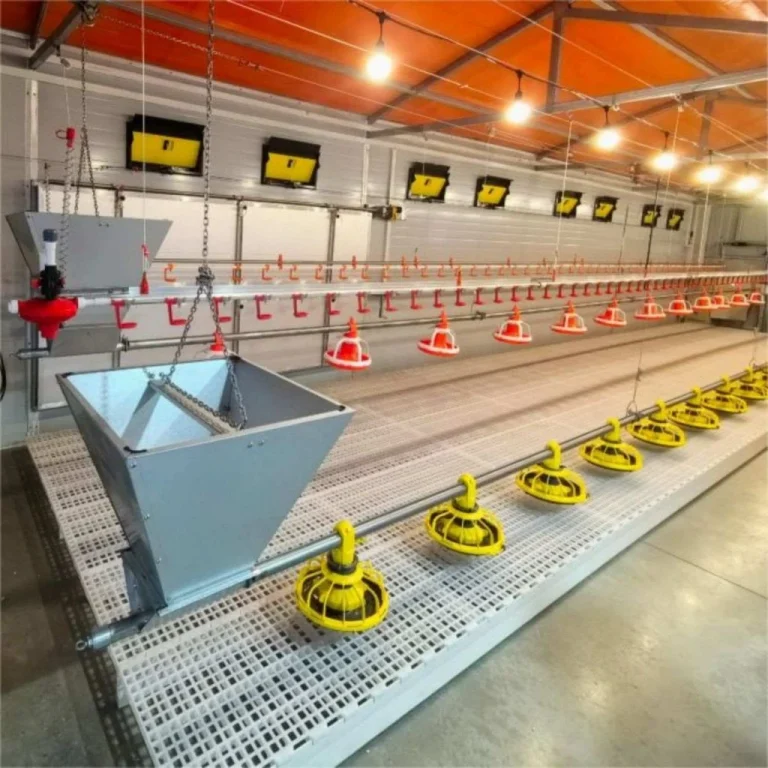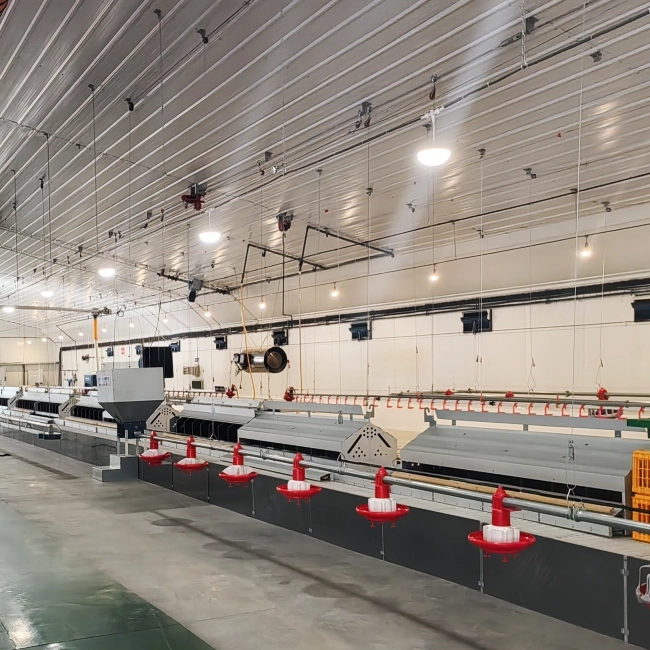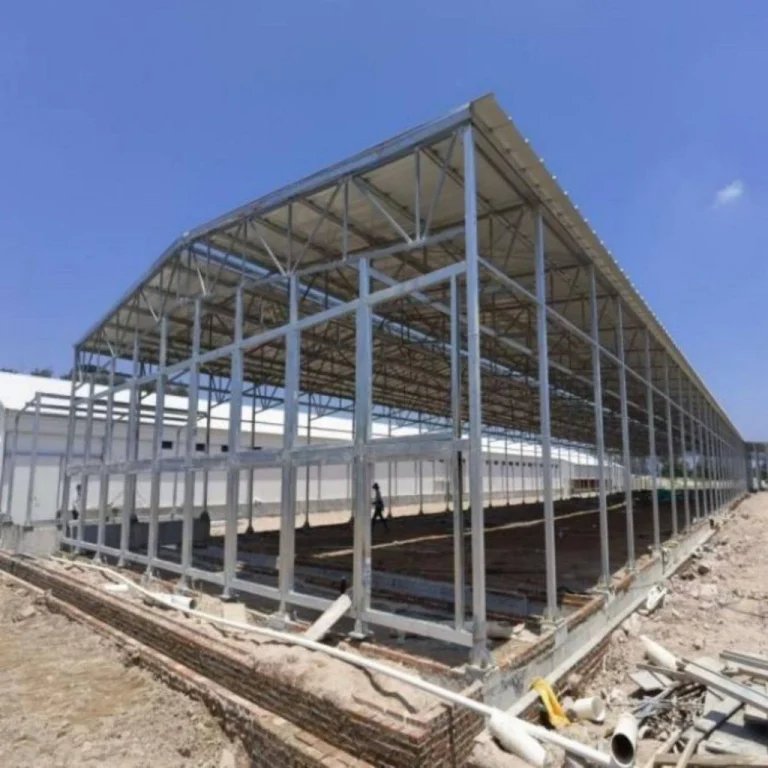Introduction of 3 Layer Chicken Cages
Layer chicken cages play a role in contemporary poultry farming by providing a structured and efficient living environment for egg-laying hens. These cages are specifically designed to maximize space utilization enhance egg output and uphold the well-being of the birds. By organizing hens into tiers these setups facilitate improved oversight and care. Farmers frequently opt for 3 tiered chicken cages due, to their capacity to accommodate a number of birds in a confined space while maintaining adequate ventilation and waste control measures.
Types of Layer Chicken Cages
Battery Cages
Structure and Design of Battery Cages
Battery cages are widely utilized in poultry farming as a common type of layer chicken housing system arranged in a grid-like layout of rows and columns for accommodating multiple birds per cage with separate feeding troughs and water supply lines provided for each bird’s convenience and comfort while the sloped floors aid in efficient egg collection, into a designated tray.
The focus is, on making sure the cages are long-lasting and easy to clean by using steel or similar materials that resist rust well They are designed to last even with heavy use The efficient layout helps farmers make the most of space and manage large flocks effectively.
Advantages and Limitations of Battery Cages
Battery cages have benefits such as boosting egg production efficiency in controlled settings and lowering the chances of disease spread by limiting bird interactions while also making tasks, like feeding and cleaning easier.
Battery cages often receive backlash due to restricting chickens’ natural behaviors like perching and dust bathing which has sparked concerns for animal welfare and resulted in stringent regulations, in certain areas regarding their utilization.
A-Frame Cages
Characteristics of A-Frame Cages
The A-frame cages get their name from their triangular shape, which looks like the letter ” A.” These cages are arranged vertically. With a tilted design that enables the manure to fall onto conveyor belts or pits located beneath each level. This characteristic contributes to keeping the system clean and tidy.
The A-shaped layout helps with airflow more than the standard flat setups do. Also, make sure that light spreads evenly on all levels to keep egg production steady for hens at various heights.
Benefits and Challenges of Using A-Frame Cages
Frame cages offer an advantage with their improved waste management system in place. The angled structure effectively minimizes the accumulation of ammonia by eliminating droppings from the habitat creating a healthier environment, for the birds and lessening the workload required for cleaning tasks.
Unfortunately, A-frame systems might need space on the floor compared to other types of cages because of their angled design. Furthermore, the setup costs at the beginning could be higher due, to the equipment required for collecting waste.
H-Type Cages
Design and Layout of H-Type Cages
Modern poultry housing systems known as H-type cages feature a stacking design resembling the letter ” H”. These multi-level setups can house hens in a small space efficiently equipped with feeding lines and drinking systems across each tier along, with egg collection trays and manure removal belts.
The H-type design is about maximizing automation and efficiency integrating sophisticated elements, like climate control systems that manage temperature and humidity levels within the poultry house.
Pros and Cons of H-Type Cages
Large-scale poultry operations benefit greatly from H-type cages, which maximize space use efficiently and uphold hygiene standards with automated waste removal systems in place. This automation also leads to cost savings on labor by simplifying daily tasks such, as feeding and collecting eggs.
While H-type cages offer advantages in terms of functionality and efficiency they do require an initial investment due to their advanced technology. Additionally keeping up with maintenance needs can be more challenging than, with cage models.
By grasping the characteristics and advantages as well as constraints linked to every variation of layer chicken housing – be it battery cages A-frame cages or H-type cages – farmers can effectively decide based on their individual requirements and farm size.
Choose the Right Layer Chicken Cage for Your Needs
Choosing the layer chicken coop is a crucial choice for farmers looking to improve their poultry operations effectively! There are types of layer chicken cages available, with distinct features and advantages suited for different farming sizes and goals. By knowing the needs of your poultry establishment you can make a wise decision that boosts efficiency and guarantees the well-being of your egg-laying chickens.
Factors to Consider When Choosing a Layer Chicken Cage
Farm Size and Space Availability
When deciding the cage type for your farm size and available space is crucial to consider factors like the compactness of the design and maximizing space usage in small-scale operations with limited land area such as battery cages or H-type cages are preferred options while larger farms might find A-frame cages beneficial despite needing more floor space due, to improved ventilation and waste management features.
Budget Constraints
Cost is a factor to consider when choosing cages for poultry farming operations. Choosing battery cages is generally more cost-effective. Tends to be favored by farmers with limited financial means. However, H-type cages may require an initial investment but they provide cost savings in the long run due, to automation features and reduced labor expenses.
Egg Production Goals
Your choice of cages is also affected by your production goals. If you aim to maximize egg yield as your objective consider selecting systems such, as H-type cages that allow for dense housing and automated feeding mechanisms. These attributes help maintain a supply of feed and create ideal living environments resulting in higher rates of egg production.
Animal Welfare Considerations
The well-being of animals is becoming more and more crucial in today’s poultry farming practices. Some cage styles like enriched battery cages or roomy A-frame setups enable hens to express their instincts such as perching and nesting. Opting for options that prioritize animal welfare can enhance the health and efficiency of your flock while staying in line, with ethical farming standards.
Customization Options for Layer Chicken Cages
Contemporary layer chicken cages frequently include options to cater to particular requirements.
- Automated Feeding Systems:Ensure uniform feed distribution across all tiers.
- Climate Control Systems:Maintain optimal temperature and humidity levels.
- Waste Management Solutions:Efficiently handle manure to reduce ammonia buildup.
- Adjustable Lighting:Enhance egg production by simulating natural light cycles.
By incorporating these elements into their operations farmers have the ability to establish a customized setting that promotes efficiency and the welfare of animals.
Regulatory Compliance
Make sure the layer chicken cage system you’re considering buying meets the regulations for poultry farming practices before making a purchase decision. Different areas may have requirements for cage sizes the number of chickens, per cage, and animal welfare standards that must be followed strictly to prevent legal complications and encourage sustainable farming methods.
Maintenance Requirements
When deciding between types of cages to use for your needs¸ remember to take into account the maintenance requirements for each option available. Think about systems such as H-type cages that come with automated features¸ which may need upkeep to keep them working smoothly. On the other hand¸, simpler designs like battery cages are easier to manage and clean¸ even though they might not have as many advanced functions, as other options.
Long-Term Viability
Consider the lasting impacts of choosing layer chicken coops for your investment decision! Although cheaper alternatives may catch your eye at a glance they could end up costing you more in the long run with constant repairs and replacements on the horizon! Opt for materials such as galvanized steel, for a lasting solution that cuts down on expenses in the grand scheme of things!
When choosing the layer chicken cage system for your poultry farm operation and ensuring its success in the long run, consider various factors such, as farm size, budget limitations, production objectives, animal welfare concerns, customization possibilities, regulatory adherence, maintenance needs, and overall sustainability. Consider Zeus as your layer cage supplier! With high-quality and multifunctional products, it is the best choice to contact us.
FAQ
Q: How do cage materials affect durability?
A: Electro-galvanized steel: Smooth surface, lightweight, but prone to rust in humid environments (8–10-year lifespan).Hot-dip galvanized steel: Thicker zinc coating (500g/m²) for corrosion resistance, lasting 20+ years.PVC-coated: Color customizable, rust-resistant, and long-lasting (20 years).
Q: What cage designs are suitable for large-scale poultry farms?
A: 4-tier or 5-tier H-type cages maximize space efficiency, holding 120–240 chickens per set. They integrate automatic feeding/watering systems and ventilation to reduce mortality and labor costs.





